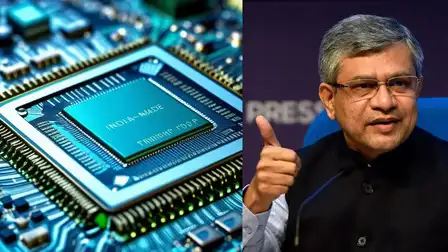In a landmark development for India’s technology and electronics manufacturing ambitions, Union Minister for Electronics and Information Technology Ashwini Vaishnaw announced that the country will roll out its first indigenously developed semiconductor chip in 2025.
The chip, based on 28 to 90 nanometer (nm) technology nodes, marks India’s formal entry into the global semiconductor manufacturing space — a sector considered critical for economic security, digital infrastructure, and strategic autonomy.
“This is not just a packaging or assembling capability. India is building a full-stack semiconductor manufacturing ecosystem, and our first indigenous chip will be ready by 2025,” said Vaishnaw during a media briefing.
The announcement follows years of groundwork under the India Semiconductor Mission, supported by the ₹76,000 crore ($10 billion) incentive program aimed at creating a self-reliant semiconductor ecosystem. The initiative has already attracted significant interest from global players, with multiple memorandums of understanding signed with technology firms for knowledge transfer and capacity building.
The 28–90nm chip technologies, although not the most advanced by global standards, are still vital for a broad range of industries including automotive, telecommunications, defense systems, and consumer electronics. Experts note that mature node chips account for a significant portion of global semiconductor demand, especially for mission-critical and legacy systems.
“This is a strategically important move. We’re reducing dependency on foreign fabs, and more importantly, we’re entering the value chain with our own capability — from design to fabrication,” the minister added.
Industry leaders and analysts have lauded the move, calling it a critical first step toward securing India’s place in the global semiconductor supply chain, which has faced repeated disruptions in recent years due to geopolitical tensions and pandemic-related constraints.
The government also highlighted ongoing infrastructure development for fabrication facilities in Gujarat and Karnataka, which are expected to serve as major hubs for chip design and manufacturing in the coming years.
With global demand for semiconductors expected to cross $1 trillion by 2030, India’s foray into this high-stakes domain is not just timely, but necessary — and may shape the next phase of the country’s digital and industrial growth.


